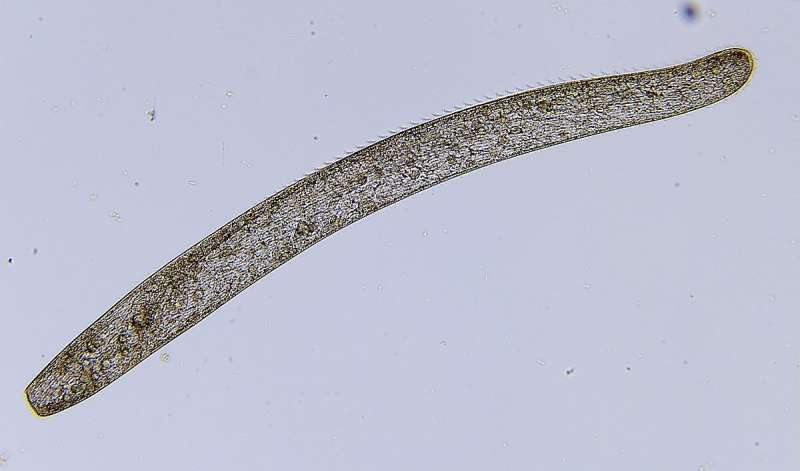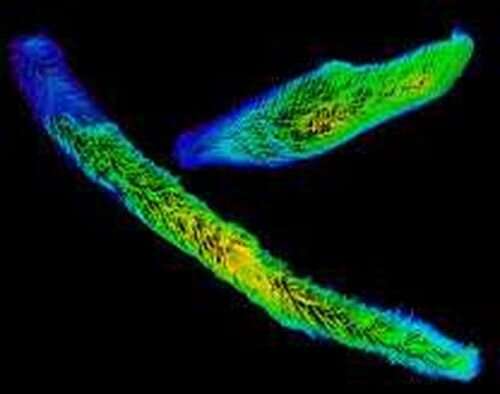This article has been reviewed according to Science X's editorial process and policies. Editors have highlighted the following attributes while ensuring the content's credibility:
fact-checked
peer-reviewed publication
trusted source
proofread
Giant proteins in a giant cell: Molecular basis behind fastest biological movement in single-celled eukaryotes

In his famous letter to the Royal Society dated Oct. 9, 1676, Antonie van Leeuwenhoek described a single-celled eukaryote (Vorticella) and its fascinating ultrafast cell contraction. This kind of ultrafast cell contraction triggered by a Ca2+-dependent mechanism is distinct from the adenosine triphosphate (ATP)-dependent mechanisms found in actin-myosin and dynein/kinesin-tubulin systems.
Spirostomum, is a genus of millimeter-scale single-celled protists that are known for their incredibly rapid movement similar to Vorticella. They are capable of some of the fastest movement in the biological world due to their ultrafast contraction. Despite much research, however, the molecular mechanism behind this type of ultrafast cell contraction has long been a mystery.
Recently, a research group led by Prof. Miao Wei from the Institute of Hydrobiology (IHB) of the Chinese Academy of Sciences has unlocked this mystery by describing the molecular basis behind the ultrafast contraction of Spirostomum. The team's research was published in Science Advances.
In this study, the researchers obtained a high-quality genome of Spirostomum using a genome assembly pipeline they had previously established. They found that the contractile structure, a mesh-like contractile fibrillar system, was composed of two giant proteins and two Ca2+ binding proteins. Using RNAi, they validated the functions of the giant proteins.

Super-resolution imaging showed that the mesh-like contractile fibrillar system couples with the microtube cytoskeleton, mitochondria and endoplasmic reticulum (ER) and fits well with the biological and physical need for repetitive ultrafast contraction and extension of the Spirostomum cell.
"Actually, our research offers a valuable reference for investigating non-model protists, covering aspects from the genome to molecular studies," said Prof. Miao.
This study is highly significant for understanding the molecular mechanism of ultrafast cell contraction and provides a good blueprint for the biomimicry, design, and construction of ultrafast contractile micromachines.
More information: Jing Zhang et al, Giant proteins in a giant cell: molecular basis of ultrafast Ca2+-dependent cell contraction, Science Advances (2023). DOI: 10.1126/sciadv.add6550. www.science.org/doi/10.1126/sciadv.add6550
Journal information: Science Advances
Provided by Chinese Academy of Sciences




















